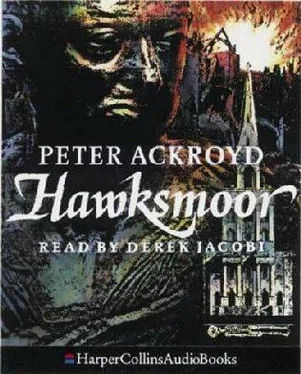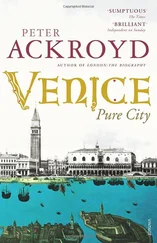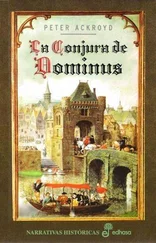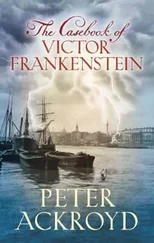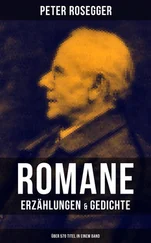'Do you mean what time?'
'Yes, can you remember the time?'
And the man frowned with the effort, as if nothing really existed before the fact of this death. He might have been sitting there for ever in the shadow of St George's-in-the-East. 'It must have been about six yesterday evening. Yes it was, because the clock struck.'
'And did he say -'
'Dan. He was Dan.'
'And did Dan say where he was going?'
'He said he was going out. He just opened the door and went out.
That was the last time.'
Hawksmoor rose and said, 'We're doing all we can. We'll keep you informed.' And the father stood up beside him in order to shake his hand, in an almost formal gesture. Walter had been watching all this from the middle of the park, and now he cleared his throat as Hawksmoor came up to him saying, 'Well, we might as well go and see it'.
The body of the child was already in place in the examination room when they arrived. Labels had been tied around its left ankle and around both of its wrists; the head had been placed in a wooden block, with the nape of the neck resting in the curvature. The pathologist had just finished washing his hands and glanced up at the two men with a smile: Hawksmoor made a point of smiling also, but none of them glanced at the naked corpse which lay only two feet away. 'You don't waste any time,' the pathologist said as he took a tape-recorder out of his pocket.
'Time is not on our side.'
The pathologist, not hearing this, bent over the body and spoke softly into the tape-recorder: 'I am now examining the external surface of the body. The face has become engorged and discoloured blue, the eyes are bulged and showers of tiny petechiae in the eyelids and conjuctivae indicate asphyxia. The tongue is protruding through the teeth. A small amount of blood has trickled from burst vessels in the ears but not in the nose. There is evidence of the emptying of the bladder and back passage. No evidence of sexual assault. I am looking now for fingertip or nail impressions on each side of the neck at around voice-box level -' and then, after a sudden pause, he continued -'None of these. Several scratches on the neck which could have been made by the victim trying to prise off the attacker's hands.
From the injuries I would say that he was strangled as he lay on the ground, with his murderer either kneeling or sitting astride him. The lividity here has formed well. Minor bruises under the scalp and over the spine suggest that he had been pressed on his back during the strangling. There is no impression of a ligature, and there are no bite marks. There are some teeth pressure marks on the reverse of the lips.'
And as he talked Hawksmoor gazed at the feet of the corpse, trying to imagine them in the act of running, but the pathologist now switched off his tape and Hawksmoor relaxed.
The mortuary assistant came forward and cut both of the boy's hands off at the wrist, taking them to a separate bench for examination.
The pathologist then made a single incision from the throat to the pubic region, cutting in a slight curve to avoid the umbilicus; then he stripped the tissue away from the ribs. The tongue, aorta, oesophagus, heart and lungs were removed in a single operation and placed on a dissecting table beside the gutted corpse. The stomach contents were put in a glass jar. Once again the pathologist switched on his recorder as Hawksmoor suppressed a yawn: There is bruising behind the voice box, and a fracture of the hyoid bone, which suggests that the killer had considerable strength -' at this last phrase his voice rose a little and he glanced at Hawksmoor. 'So I would say definitely asphyxia by strangulation.' The pathologist's hands, which he now held over the corpse, were red and dripping: he was about to scratch his head, but stopped in mid-gesture. His assistant was now carefully examining the nails on each finger of the severed hands. Hawksmoor, watching all this, felt a rapid tic in his left eye and turned away so that no one might see it.
'I need to know when,' he said, 'In this case when is more important than how. Do you have a time-table?' For although images of this murder now surrounded him, and the parts of the body had become emblems of pursuit, violence and flight, they were as broken and indistinct as the sounds of a quarrel in a locked room. Only the phases of time could be known clearly: the quickening and deepening of respiration at the first shock of the hands around the throat; livid congestion and laboured respiration as the grip tightens and consciousness becomes confused; infrequent respiration, twitchings, loss of consciousness; terminal vomiting and death. Hawksmoor liked to measure these discrete phases, which he considered as an architect might consider the plan of a building: three to four minutes for unconsciousness, four to five minutes for death.
'And so do you have a time-table?' was his question.
'A time-table is going to be difficult.'
'And how difficult is difficult?'
'You know that temperature rises sharply during asphyxiation?'
Hawksmoor nodded and put his hands in his pockets. 'And you know that heat loss is variable?'
'And so?'
'I don't know about the time. Even if I allow for a rise of temperature of six degrees at death, and even if the rate of cooling was only two degrees an hour, his present body heat would mean that he was killed only six hours ago.' Hawksmoor felt the tic returning as he listened to this intently, and he rubbed his eye. 'And yet the extent of the lividity is such that the bruises were made at least twenty-four hours ago normally they can take two or three days to come out like this.'
Hawksmoor said nothing, but stared in the man's face. 'You say the timing is crucial, superintendent, but I have to say that in this case I don't understand the timing at all.' The pathologist at last looked down at his bloody hands, and went towards a metal sink to wash them. 'And there's another thing,' he called out over the sound of running water, 'There are no impressions, no prints. A strangler's fingers pressed into the neck will leave a curved nail impression, but there are only bruises here.'
'I see.' And Hawksmoor watched Walter suddenly leave the room.
'I will have to do more tests, superintendent, but I'm almost sure that there are no prints.'
'Could the murderer have chilled his hands?'
That's possible, certainly. Or they might just have been very cold.'
'And if there was a struggle, I suppose the boy might have clutched the fingers to loosen them and then disturbed the prints?' Although this sounded like a question the pathologist did not answer it, and for the first time Hawksmoor stared down at the opened corpse. He knew it was not yet completely cold, and in that moment he felt its heat blasting his face, and as the air crumpled like silk around him it was his own body upon the table.
Walter was sitting with his head bowed forward over his knees when Hawksmoor eventually joined him in the corridor. He put his hand on the young man's shoulder: 'Well, Walter, what do you make of that timing?'
Walter looked up at him in alarm, and Hawksmoor averted his eyes for a moment. 'It's impossible, sir.'
'Nothing is impossible. The impossible does not exist. All we need is a new death, and then we can proceed from the beginning until we reach our end.'
'And what end is that, sir?'
'If I knew the end, I could begin, couldn't I? I can't have one without the other.' And he smiled at Walter's evident perplexity. 'Don't worry, I know what I'm doing. Just give me time. AH I need is time.'
'I'm not worried, sir.'
'Good. And since you're so happy you can go and see the father.
Tell him what we've found out. But don't tell him too much.'
And Walter sighed: Thank you very much. I appreciate the gesture, sir.'
Читать дальше
